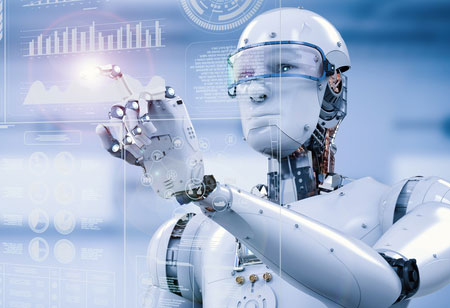THANK YOU FOR SUBSCRIBING
How Big are Micro Machines?
The integration of micro-machines has disclosed various possibilities that were previously not possible.

By
Apac CIOOutlook | Wednesday, August 14, 2019
Stay ahead of the industry with exclusive feature stories on the top companies, expert insights and the latest news delivered straight to your inbox. Subscribe today.
The integration of micro-machines has disclosed various possibilities that were previously not possible.
FREMONT, CA: Connected to all aspects of micro and nano-scaled frameworks, materials, devices, structures as well as micro- and nanotechnology, the miniaturized machine innovation intends and promotes submissions from research and development to applications on crucial and original functions. By turning power sources into physical work, synthetic nano- and microscale devices operate autonomously in solution to push forthcoming enterprises. Even though the dimensions are similar to sub-nano- or microscale, responding to stimuli from each other and external environment, resulting in collective behavior becomes much more efficient and comfortable. From micro battery to lab-on-a-chip, the range of applications of micro machines functionality extends across several industries.
Micro Battery Market Size to Increase
Unique nanometer-scale procedures enable chip developers to insert more and more transistors on the integrated circuit layer; in the method, doubling computational ability every 12-18 months. With the amalgamation of segregated functions, the micro-machines industry is set to cross the transformative benchmark.
Global Micro Device is a small flat-cell battery which is used to supply energy for portable devices like wristwatches, pocket calculators, and wearable. With the implementation of portable systems and the intrinsic benefits of micro-batteries, the need for compact components will boost the development of the industry for micro-batteries. Furthermore, as the size diminishes and the functions grow, the technology developers are able to manipulate versatile features to revolutionize conventional applications.
A variety of appliances and widgets necessitate rechargeable batteries with long service life, and smart technologies initiate operating under elevated protocols, which further promoted the development of micro-batteries. Additionally, advances in technology in smart containers, as well as the implementation of pharmaceuticals, essentially pacemakers, medication distribution networks and medical patches requiring lightweight, versatile and secure energy sources, fuel business development in micro-batteries over the developmental era. With the assembly line in multiple sectors flock in with nanoscale devices, the industrial experts and professionals estimate that the Micro Battery Sector will expand over the forecast period 2019-2026 with a good development pace of more than 30.4 percent.
Micro-machines in Medical Applications
Most of the presently accessible micro-machines in medical operating systems are intended for accurate stress measurements. Used with catheters, this stress sensor is likely the size of a salt crystal. Most micro-machines presently used in clinical exercise track stress in various areas of the body, providing discreet and inexpensive accurate measurements. However, the potential of micro-machines extends far beyond monitoring utilities.
Inertial sensors are being incorporated into the clinical zeitgeist to enhance the function of pacemakers. On the horizon are instruments that perform main functions in the provision of health care, such as pumps delivering micro-quantities of drugs or assisting broken bodies. Apart from the elevation of fundamental functionalities, the contribution toward increasing efficiency at a shorter time makes the innovation unique.
The Emergence of Lab-on-a-Chip Technology
The advent of chip technology has revolutionized the domain of biomedical science over the previous two decades, offering a chance to explore complicated 3D structures with an enhanced similarity to living structures. Breakthroughs in nanotechnology have resulted in the growth of lab-on-a-chip (LOC) miniaturized systems. In specific, lithography has helped to produce nanoscale prints on metal industry and semiconductor surfaces.
Specifications for small sample size and elevated control of fluid relationships enable for broader use, effective responses, and fast synthesis. Furthermore, the integration of polymerase chain reaction (PCR) on a chip accelerates DNA amplification by more than ten folds from that of standard thermocyclers. Miniaturization of semiconductors and developments in photolithography has allowed equipment to handle high-throughput parallel experimentation, accelerating studies and growth. These benefits result in less use of reagents and thus reduced expenses and chemical waste.
The most optimal real-world implementation for microrobots would be to use bristle-bots to reach locations that are hard to accomplish, such as gaps inside big infrastructure or tiny holes in complicated equipment where people or typical robots are unable to go and do studies. Furthermore, micro-bots can control and detect heavy metals from hard and contaminated water. As scientists have progressively illustrated the micro-bots capacity to travel across a variety of terrain from shallow inclines to paddling through body fluids, these machines will only become more helpful.
Check This Out: Top Embedded Design Companies





